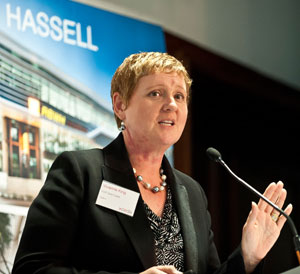The ideal public transport model is self-funded and sustainable, such as the Mass Transit Railway in Hong Kong, KDR Gold Coast, Managing Director, Vivienne King, has told a CEDA forum in Brisbane.

The ideal public transport model is self-funded and sustainable, such as the Mass Transit Railway in Hong Kong, KDR Gold Coast, Managing Director, Vivienne King, has told a CEDA forum in Brisbane.
Ms King said it's about creating a demand business model.
"Mass Transit Railway in Hong Kong is the only railway that uses this model, costing 54 cents per person per trip," she said.
She said the problem in Queensland is there is a lot of congestion and a lack of funds.
"We need to take people out of cars and put them in transport that works for the wider community and city," she said.
To secure sustainable forward looking transport, long term planning needs to be locked down early and funding processes decided, she said.
In addition, she said when leading a transport development, there needs to be a balance between the operator and the constructor.
You need to bring in an operator early enough to influence the design. I don't see a lot of this in Australia at the moment, she said.
She said when using Public Private Partnerships (PPPs) to fund transport infrastructure projects, specifications for both contracts and design must be clear from the start for them to be successful.
Ms King said in Europe the approach was to ensure the specifications are clear and then go to market. However, in Australia the approach seemed to be to go to market and then make sure the specifications are clear, often resulting in delays.
University of Melbourne, Department of Infrastructure Engineering, Dr Chris Hale said for Brisbane, financing innovation and policy leadership is needed for rail to be upgraded.
Many inner-urban truck routes are viable for light rail and there needs to be a sustained shift from car to transit, he said.